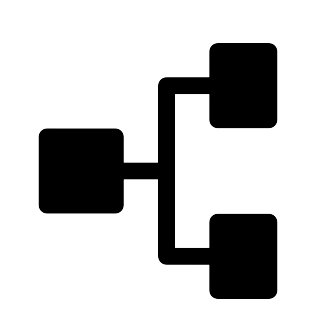AI-Powered Concept Maps
What are Concept Maps?
Concept maps are visual tools used for organizing and representing knowledge. They consist of concepts represented using shapes connected to each other by lines or arrows to describe the relationship between those concepts. The structure of a concept map can vary depending on the information being represented. Still, they all aim to simplify complex information and help users understand, remember, and integrate new knowledge with what they already know. They are an incredibly useful tool for learning, research, and knowledge exploration.

Origin of Concept Maps
Concept maps were first developed by Joseph D. Novak and his research team at Cornell University in the 1970s to reflect how students learn and understand scientific concepts. Since their initial usage, concept maps have been used in various places, such as knowledge management, business planning, and structuring complex ideas.
Concept Maps vs Mind Maps
Concept maps and mind maps are visual tools used for organizing and representing knowledge, but they serve slightly different purposes and follow different structures. Concept maps are structured to show the relationship between concepts. This format is particularly useful for understanding and visualizing the relationships between different ideas or concepts, often used in educational settings to facilitate learning and comprehension of complex subjects.
On the other hand, mind maps are more centered around a single central concept or idea from which related ideas, tasks, words, or concepts branch out in all directions. These branches can further divide into smaller branches, creating a web-like structure. Mind maps are less formal and hierarchical than concept maps, often used for brainstorming, planning, and organizing thoughts in a more creative and less structured way. The connections between the ideas in a mind map are not typically labeled, as the emphasis is on generating and connecting ideas freely rather than analyzing their specific relationships.
While both concept maps and mind maps are used for organizing information visually, concept maps focus on exploring and explaining the relationships between concepts in a structured manner, whereas mind maps are more about freely generating and connecting ideas around a central theme.
Advantages of Concept Maps
Concept maps are a powerful educational tool that offers numerous advantages. They promote understanding by visually organizing and representing knowledge, making complex ideas easier to grasp. This visual representation helps identify and understand the relationships between different concepts, which is crucial for deeply comprehending a subject. Concept maps also encourage active learning, critical thinking, and creativity, as students not only consume information but also organize and present it meaningfully. Concept maps improve memory retention and recall by enabling the integration of new and existing knowledge. Furthermore, concept maps can be a collaborative tool, promoting engagement and communication among students or between students and teachers. Lastly, in an era of digital learning and AI, concept maps can be easily created and shared using various educational tools, making them a convenient and accessible educational resource.
AI-Powered Concept Maps
Heuristica is an AI-powered knowledge exploration tool and concept mapping tool. It allows the user to enter a concept, like "Macroeconomics," and press the buttons on the user interface to operate on this concept. For example,
- The user can press the "What" button to learn "What is Macroeconomics."
- The user could press the "Who" button to see who founded the discipline or learn more about the key figures.
- The user could press the "Significance" button to learn more about the significance of "Macroeconomics."
These buttons are abstractions for prompts to a Large Language Model (LLM) that are optimized to return the desired result in the best possible way. The result of these operations is nodes connected by lines indicating the relationship between each other.
Why Use AI to Generate Concept Maps?
AI-powered concept maps offer several advantages that enhance learning, planning, and complex data analysis. Firstly, they can save time and resources. They allow us to fetch conceptually related information with a click of a button without manual input. This efficiency can be beneficial in an educational setting where the students might need to familiarize themselves quickly with complex subjects.
Secondly, AI-powered concept maps promote divergent thinking and exploration by quickly surfacing similar or related concepts that the user might be interested in. This can help the user discover concepts they would not have been able to otherwise.
Finally, AI-powered concept maps can personalize learning experiences. By understanding a user's knowledge level and learning style, the AI can adjust the complexity and presentation of the concept map, making learning more efficient and effective. This personalization can significantly enhance the learning process, making it more engaging and tailored to individual needs.
Using Heuristica for AI-powered Concept Maps
It is highly recommended that you use concept maps to learn complex subjects. Concept maps are visual tools that help organize and represent knowledge. They facilitate understanding by breaking down complex subjects into more straightforward, interconnected concepts. They are great for hands-on, visual, and active learning. Heuristica makes it easier to generate concept maps that not only break down complex subjects but also help you discover completely new avenues of exploration! Check out the Explorations page to see examples of AI-powered concept maps.
Similar Posts
Don’t write your content. Discover it using ChatGPT
An innovative way to produce content with Heuristica
8 EdTech Conferences That Will Transform Your Teaching in 2024
Attend the top EdTech conferences 2024 to revolutionize your teaching strategies. Explore cutting-edge technology and connect with industry leaders at events like BETT Show, TCEA, SXSW EDU, and more.
10 Game-Changing EdTech Tools to Use in 2024
Explore the best EdTech tools of 2024 for enhancing teaching and learning experiences. Discover innovative platforms like Heuristica, Edpuzzle, and Nearpod that personalize education and boost student engagement.



